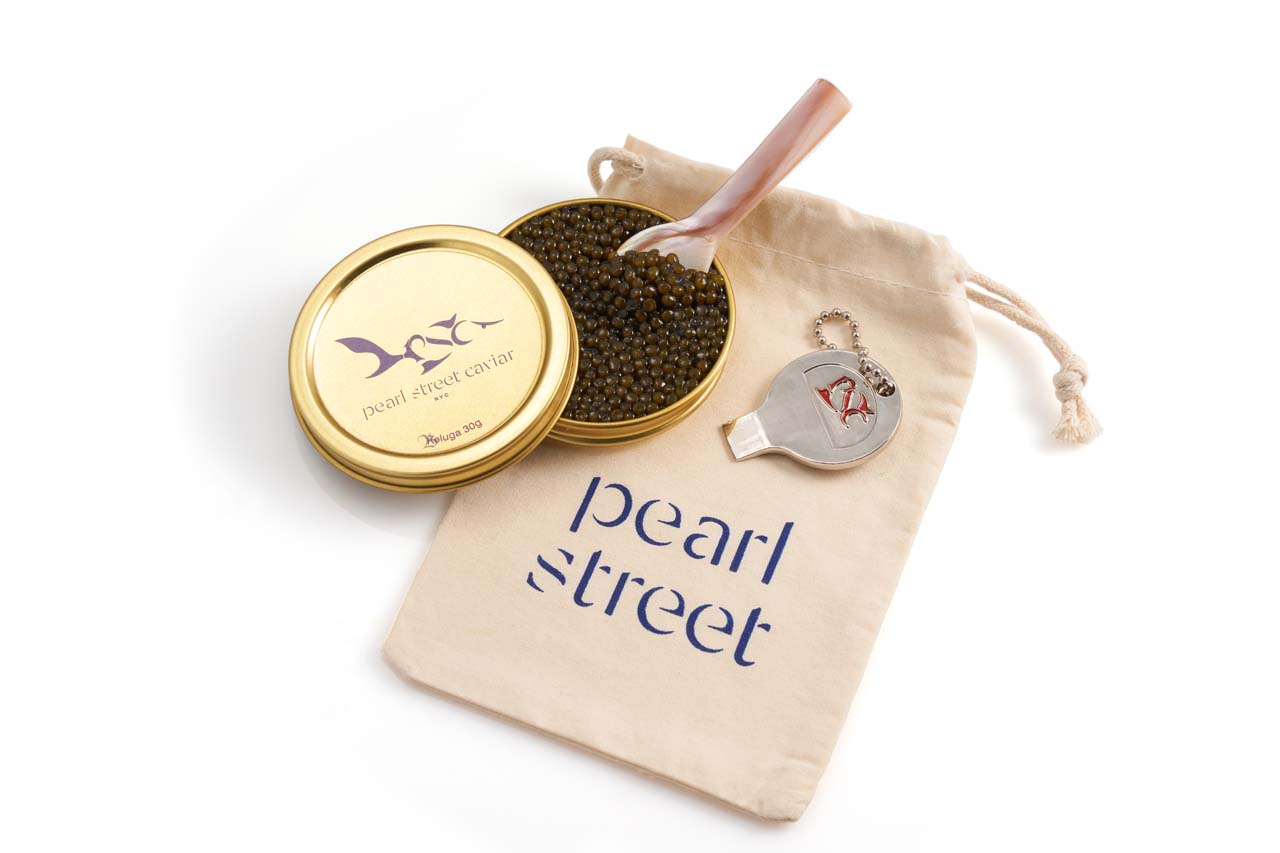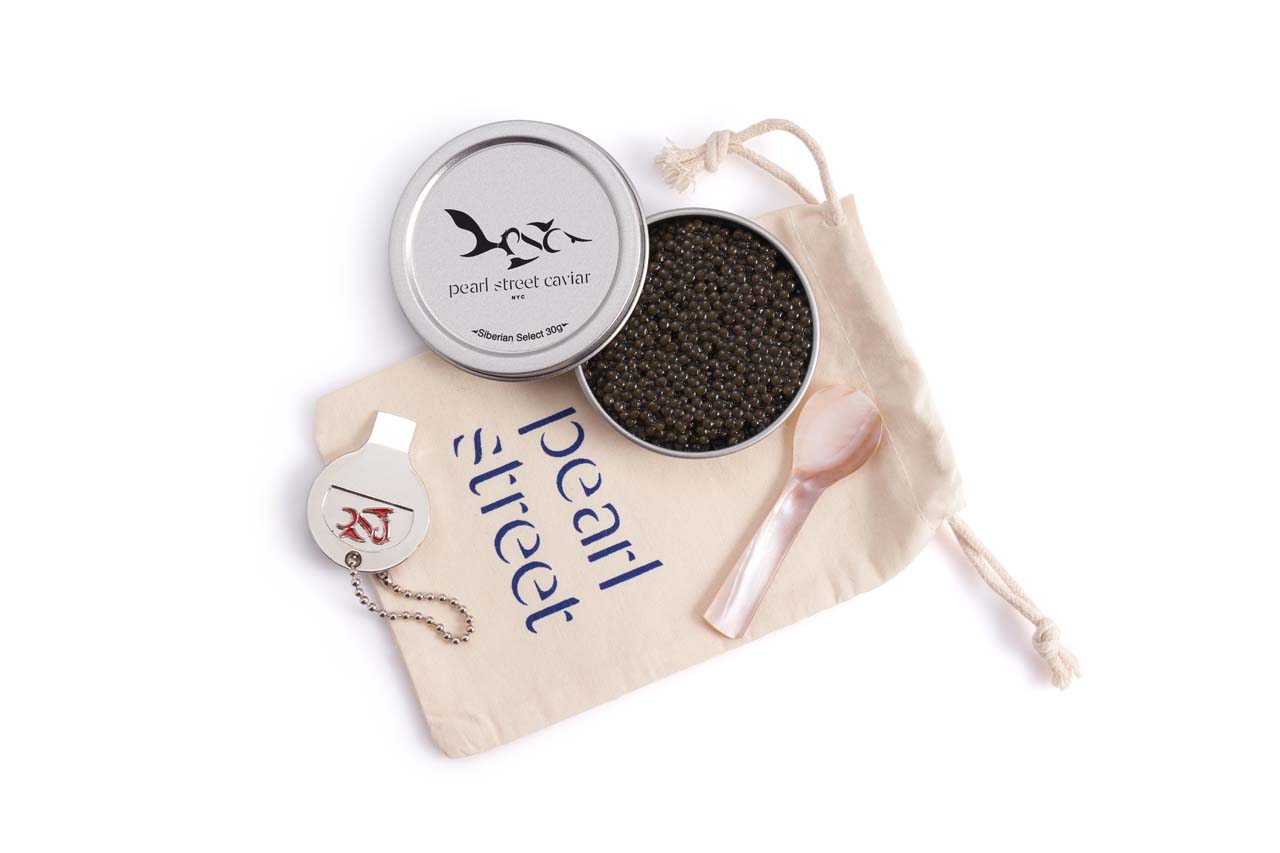A BOROUGH-BASED COMPANY PUTS A FRESH SPIN ON A ONETIME NEW YORK SPECIALTY
BY ERIK SCHONING
Journalist Irving Kristol once succinctly opined that, “One can be unhappy before eating caviar, even after, but at least not during.” And, of course, glossy black sturgeon roe holds a rarified position in the dining pantheon, and has been consumed since at least Ancient Greece, and likely thousands of years earlier. Recent advances in aquaculture (principally fish farming) have made it more sustainable and affordable, however, so what borough-based Pearl Street Caviar aims to do isn’t so much re-brand it for our palates, but for our pockets, and return to its roots.

Caviar holds an interesting and undersung place in New York’s culinary history. Company founder Craig Page was born and raised in Cobble Hill and came to appreciate the food after a friend who worked in professional basketball mentioned its popularity in that world. Since then he has become an expert on the subject. He explains: “Back at the turn of the last century, city and nearby waterways were the biggest producer of caviar in the world with the majority of the processing was done on Pearl Street. Because of the abundant supply, it was inexpensive.”
Caviar, like lobster and oysters, was once so abundant in New York, in fact, that it was given away as bar food, a salty snack intended to make drinkers more parched. For a long time, and
still today in caviar-producing parts of the world, buttered toast with a dollop of roe constituted a classic and nutritious breakfast packed as it is (depending upon source fish) with protein, calcium, iron, vitamins A, B2, B6, B12, B44, C, and D, as well as essential amino acids.
Sadly, Big Apple-associated waterways are no longer suitable for production, and fish eggs here and elsewhere have been largely reimagined as a gourmand’s food, served on ice with chopped onions, blini, and crème fraiche, at a hefty price tag. Pearl Street Caviar’s mandate was to change that.
“I never want to hear the word ‘indulgence’ around here,” said Page, adding that the company offers only two varieties, in suitably unpretentious tins. The first, Siberian Select, has a saltier, briny taste and can hold its own against strong flavors in dishes.

The second variety, Keluga, comes from a sub-species of sturgeon that is bigger and lives longer than most varieties. Like scotch, its flavor becomes subtler as it ages, and rewards simple preparation, whether snacking from the tin or serving to friends. And if one happens to be new to the food, you can’t go wrong with either, Page explained, but recommended starting with the latter. Tins start at $25 for Siberian Select, $44 for Keluga, so no bank-breaking is necessary either way. There’s also swag available, specifically “Eat Caviar”-lettered shirts and hats.
“For every egg that ends up in a tin in the marketplace, another is fertilized and reintroduced into the Amur River system, which runs along Russia’s eastern border,” Page said. “Historically, it was a thriving ecosystem. We’re working to build it back.”
All this effort seems like the right thing at the right time, not least because NBA superstars and Brooklyn chefs alike continue to rediscover and reinvent the food. The stuffiness and price tags of white tablecloth joints have given way to a caviar scene that reflects the tastes of today: relaxed, elegant, and unpretentious. The company, through a partnership with NBA LAB (the league’s research and development incubator), made its way into the Barclays Center last year, serving its product to hometown Nets fans. Today they sell NBA team-branded tins, which seems a perfect statement on where caviar is right now.
When asked about his basketball preferences, Page took a typically underdog stance. “We like the Nets and their spirit…this new team in the city fighting against the established one,” he said with a laugh. “That being said, we like the Knicks, too.”

Pearl Street Caviar
pearlstreetcaviar.com


